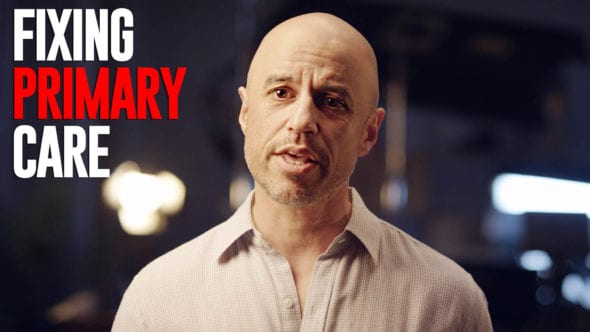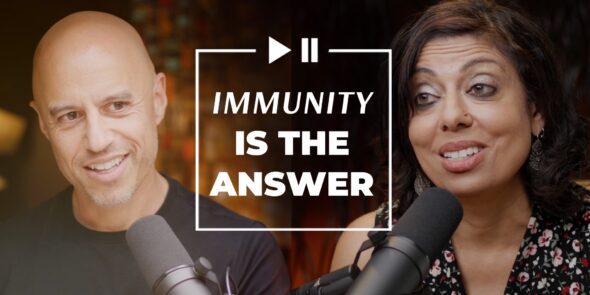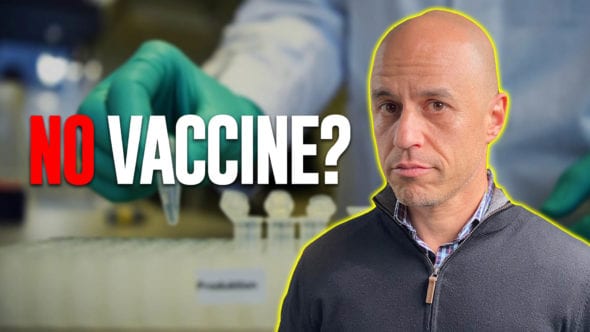If this is true, it means there are just 3 simple things we can all do to end this nightmare.
Here’s a deeper dive into this along with links to the Atlantic article I referenced.
And here’s an audio podcast version of that longer, live deep dive.
Guys, it’s Dr. Z. I have not been this optimistic or excited during this entire pandemic, you guys, because there’s some new possible information and research that may transform how we think about this whole coronavirus nightmare, and it’s this.
Many people have talked about herd immunity. In other words, particularly conservative politicians talk about just letting the virus go until the population reaches something called herd immunity. I prefer the term community immunity, and it comes from vaccine data that says that, you know, with measles, say, if you vaccinate 90% or more of the population, the virus has nowhere to go because enough people are immune that when one person is sick, they try to give it to someone else, but that person’s vaccinated, right?
So in this case with SARS, you can get that immunity two ways, through a vaccine, which we haven’t developed yet, or by actually getting infected. So if you get infected, presumably you develop immunity and that means the virus can’t infect you again. So if, it used to be thought that if 60% or more of the population develops this immunity through natural infection, the virus will peter out because it just cannot go anywhere in the community. Enough people are immune.
Well, what’s the problem with that? If 60% of people get infected and the virus has a mortality rate of say, 1%, do the math on that. That is a ton of dead people, and that could be your grandma. It could be you, and that’s the pushback then from the left, that cares more about kind of care versus harm, but there may be an answer to this, which is recent data, which I’m going to share in a link below, implies that maybe that herd immunity threshold isn’t 60%, but more like 20%.
Why? Because coronavirus is interesting in that it doesn’t infect everybody equally. It infects the most susceptible people who get the highest amount of virus in them. People who wear masks, people who social distance might get infected at a lower level of virus with no symptoms or minimal symptoms and still develop immunity, or they may simply be resistant and not get infected at all, in which case only maybe 20% of people need to be infected until you get enough immunity that the virus has nowhere to go because the rest of the population isn’t really susceptible and they’re masking and they’re social distancing, but the economy is open.
We’re going about our lives and the pandemic peters out. Take a look at New York and hotspots where the infection went crazy and the prevalence of people who’ve already been infected is like 15%. What’s happening now? Not much. Oh my God. If that’s true, you have an answer. Wear a mask. Why, because you reduce your risk of dying in the short run and spreading it to someone who could die. Until we slowly reach community immunity, because even with masks, you can get infected, especially cloth masks, we reach community immunity and the thing peters out, but we’ve saved as many lives as we can.
The difference by the way, between 60% herd immunity level and 20%, at 60% to 20%, that’s 30 million deaths that you wouldn’t have if this 20% number is true.
So do me a favor, share this video, do the three things. Mask when you can’t social distance. Social distance, wash your hands, get tested if you have symptoms, that’s it, and this thing may well be over. I am so stoked if this is true, more data is needed, but share the video because if it is true, we’re on the right track to getting the hell out of this mess. All right, I love you guys. We out.
Related Videos
Category
- The ZDoggMD Show (797)
- Featured Videos (188)
- Doc Vader (142)
- Against Medical Advice (128)
- Medical Humor (95)
- Public Service Announcements (87)
- Music Parodies (74)
- Nurses (59)
- Meditation (38)
- ZVlogg (36)
- The VPZD Show (31)
- ZTalks (28)
- ZBlogg (24)






